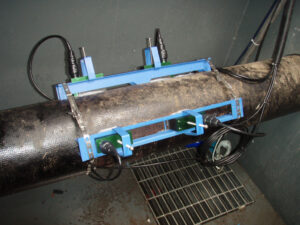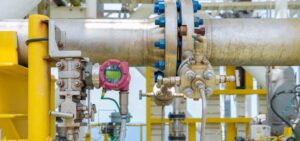The Importance of Accurate Flow Measurement
In a plethora of industrial applications, precise and accurate flow measurement is of utmost importance. From managing water treatment facilities to regulating chemical processing, accurate flow measurement allows businesses to operate more efficiently and safely. It’s crucial to understand the different types of flow meters and the specific functions they serve. This blog post aims to explore one such vital tool – the Variable Area Flow Meter (VAFM), an ideal choice for various applications.
What is a Variable Area Flow Meter?
Variable Area Flow Meters, often referred to as Rotameters, are a staple in the flow measurement world. They provide accurate and dependable flow rate measurement in a wide range of industries, including chemical, pharmaceutical, food & beverage, and water treatment, among others. The primary working principle of VAFMs involves a fluid or gas flowing upwards, counteracting gravity, through a vertically-oriented glass tube, which has a tapered, variable area. The position of a float within this tube corresponds to the flow rate of the fluid or gas.
The Design of Variable Area Flow Meters
The classic design of a VAFM consists of a tapered tube, typically made from glass or plastic, with a ‘float’ inside. As the fluid or gas flows through the tube, it forces the float to rise until the weight of the float balances the upward force of the fluid. This equilibrium position of the float correlates to the flow rate, which is usually read off against a scale on the tube.
Benefits of Using a Variable Area Flow Meter
Variable Area Flow Meters offer several benefits that make them a viable option for many applications:
Versatility
Variable Area Flow Meters can be used to measure the flow of liquids, gasses, and steam, making them incredibly versatile. They can operate over a wide range of temperatures and pressures, and can also handle corrosive or hazardous substances.
Easy Installation and Maintenance
VAFMs are typically easy to install, with no requirement for straight inlet or outlet piping. This makes them suitable for tight or restricted spaces. Moreover, they require minimal maintenance, due to their robust design and lack of moving parts, other than the float.
Direct Flow Readings
The direct-reading scale on a VAFM provides an immediate visual indication of the flow rate, without the need for auxiliary power. This makes them handy in situations where power supply might be intermittent or not available.
Considerations When Choosing a Variable Area Flow Meter
Though VAFMs are incredibly versatile and reliable, it’s essential to consider a few key factors before selecting a VAFM for your application:
Fluid Characteristics
The nature of the fluid you’re measuring can significantly influence your choice of flow meter. You need to consider aspects such as the fluid’s viscosity, temperature, pressure, and whether it’s a liquid, gas, or steam.
Accuracy Requirements
The required accuracy level for your application will determine the type of VAFM you choose. High-precision models are available for critical applications, while more cost-effective options are suitable for less demanding situations.
Environmental Conditions
The conditions under which the meter will operate can also impact your choice. For instance VAFMs require clean particle free fluids. You also need to consider factors like the ambient temperature, potential exposure to corrosive substances, and whether the meter will be exposed to vibration or shock.
Conclusion
Choosing the right flow measurement tool is crucial to the efficient and safe operation of many industrial processes. Variable Area Flow Meters, with their versatility, ease of installation and maintenance, and the ability to provide direct flow





